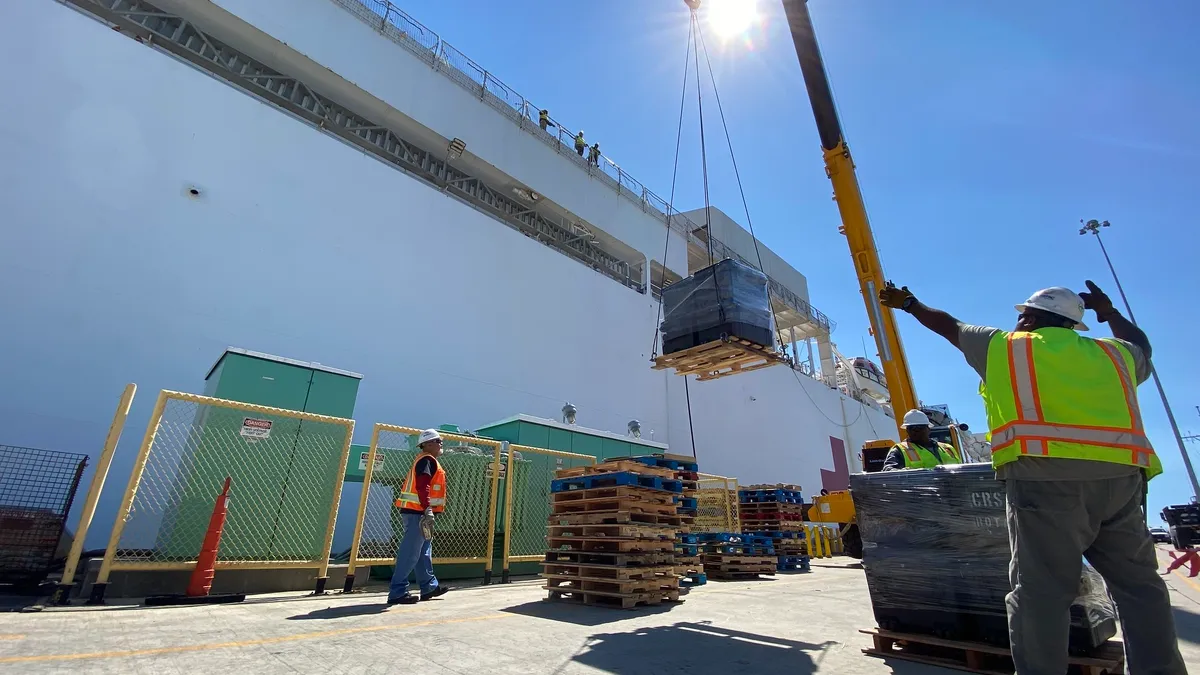One would be hard-pressed to find any construction industry player that hasn't been affected by the COVID-19 pandemic. While a few U.S. jurisdictions have banned construction work altogether, many more have limited which projects can move forward.
However, according to John Robbins, managing director and USA and North America head of real estate for Turner & Townsend, developers and contractors that find their project pipelines in a stall pattern still have plenty of planning to do for the reboot of work. Some experts say this could come as soon as the next few weeks while others say it might be in a few months.
One thing is certain: When construction comes back to full strength, U.S. contractors will face some new short-term and long-term realities.
First, Robbins said, when contractors are cleared to begin work, they could find themselves waiting in a long line for building inspections; materials, tools and equipment; and skilled trade workers and other labor, particularly as some seek to make up for schedule delays.
"It will be a strategic balancing act of demand with resources and available materials," Robbins said. He added that city, state and municipal agencies will have to deliver "high levels of cooperation" to maintain a quick turnaround of permits and other approvals.
Robbins also said that owners, consultants and contractors should work together to ensure a smooth reboot. That includes exploring funding options for cash-strapped contractors and settling matters related to coronavirus-related costs.
In the long term, the stay-at-home orders issued in most states have forced owners and contractors into what Robbins called the “great remote working experiment," which could usher in a more permanent digital transformation. "I believe we will see the future of project and program management digital innovation now come to the fore," he said.
Also, Robbins said, now that social distancing has become a permanent part of the construction industry lexicon, techniques that allow for a reduced level of human interaction like modular construction, remote and robotic drone inspections, autonomous rovers, 360-degree cameras and artificial intelligence may become more popular. "[This technology] is not only a good idea, but [it is] perhaps a necessary one," he said.
What's next?
Robbins offered other ways that construction will look different once the coronavirus crisis passes. In order to be ready for these changes, he said owners might want to:
- Take another look at each project's material specifications and make sure they include options for locally sourced or readily available products in order to provide enhanced levels of cost and schedule controls.
- Review project delivery methods. Consider a construction management at risk (CMAR) model and, engage a contractor using a "fee only" bid while construction documents are still in production. With the design team and cost manager acting as an integrated project team, look for long-lead items that can be sourced early to avoid future schedule delays.
- Perform a quantitative risk analysis of each project to gain a thorough understanding of potential exposures to the cost and schedule.
During the bidding process, contractors should expect that some owners and developers will:
- Decide whether to pursue competitive bids in an environment of tight contractor and material supply.
- Extend the length of the procurement period, potentially impacting the schedule.
- Consider rewriting the Request for Proposal (RFP) to include multiple shifts, overtime or other labor-acceleration mechanisms that will help make up for any delays incurred during planning and procurement and mitigate potential future delays. Using multiple shifts will also assist contractors in adhering to social distancing requirements by reducing the density of workers on site.
- Update risk analyses and include those potential impacts in their projections.
Construction companies, suppliers, owners and developers will need to stay in touch with each other during downtime as these decisions could change one or more elements of the project, he added.
The types of projects that will be in demand will also be slightly different from pre-coronavirus days, according to RCLCO Director of Strategic Planning Charles Hewlett.
He told Construction Dive that demand for distribution and warehouse space may likely increase as U.S. companies favor higher inventory levels and emphasize supply chain resiliency over efficiency. Market reports have calculated that a 5% increase in total business inventories would translate into the need for an additional 500 million to 700 million square feet of industrial space.
“In the long run, expect more manufacturing facilities to locate in North America to ensure supply and access to markets during episodes like this one, a boon to economic growth and industrial and logistics facilities in the U.S. and Mexico,” he said.












